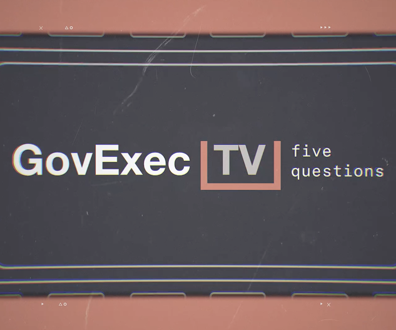
Shutterstock.com
Government Workforce Management—Overdue for an Overhaul
Agencies are handicapped by outdated management rules—it isn’t a worker problem, it’s a system problem.
In 2017, it took the federal government an average of 106 days to hire a new employee. In that time, most private sector companies can hire, onboard and begin seeing meaningful contributions from new employees. At the state level, the number of job applicants plummeted 24 percent from 2013 through 2017, despite an 11 percent increase in job postings.
Today’s best companies are all about unleashing the talents of their employees. Government, on the other hand, is handicapped by outdated management rules.
Public sector leaders know better than anyone that changes are needed.
“It makes no sense to me whatsoever that we have to try to recruit, hire, retain, and pay people in a system that was designed in the 1940s,” Angela Bailey, Chief Human Capital Officer of the Department of Homeland Security told the Federal News Network.
The gap between the public sector and the private sector in modern workforce management policies is wide and appears to be getting wider. Successful organizations strive to make their employees successful, both as individuals and as part of a team. Too often, the public sector is locked into decades-old workforce policies, weighed down by rigid job classifications, inflexible pay, and a reliance on seniority as a substitute for capability. The result isn’t good for performance or employees.
This isn’t a worker problem. This is a system problem. High-performing talent wants the kind of meaningful, high-impact work that government has to offer. But agencies’ inflexible, rule-based approach to managing its workforces can make top talent wonder if government is the right place for them to shine.
That’s a shame, because government needs the very best talent to tackle today’s challenges.
To attract the best, government needs to modernize its approach to work. This likely includes greater investment in the skills of current employees.
That won’t be easy. Fundamentally redesigning government work would mean jettisoning bureaucratic controls built up over decades. It could mean investing in employees to help them gain skills they need to tackle the toughest problems. Here are five ideas to consider for such a reform effort.
Recognize the individual worker. Every employee is unique. Governments can adopt more flexible personnel systems, opening the door for higher pay, better use of contractors, and adjusted benefits packages. All-star tech talent commands a huge range of pay in the private market, especially when working for equity. A one-size-fits-all approach won’t meet the demands of today’s top performers.
Simplify job descriptions. When it comes to flexibility, job classifications might be a good place to start. California recently removed more than 700 job classifications. Tennessee reclassified its IT positions in 2013, restructuring the states’ IT organization chart to suit expected technology needs. Tennessee’s employees had to reapply for their old jobs. However, the system offered support for these employees—mapping a path from the jobs the state won’t need to the ones it will.
Reskill workers into new roles. Continuous reskilling can help prepare the workforce for inevitable changes. To prepare public workers for the digital revolution, the UK has created a digital skills “bootcamp,” in which government employees leave their department for a week to learn the tenets of skills like agile development or human-centered design. These employees are offered the necessary background to participate in new agile projects and the opportunity to learn on the job alongside experienced professionals.
Consider how upskilling could improve productivity. A study found that people who learn the most on the job are 47% less likely to be stressed at work. Relaxation leads to gains in focus, and productivity, and further down the road, reduced health care, insurance, and worker’s comp costs.
Use technology to amplify human capabilities. Where training is impractical, technology can supplement current skills. NASA has replaced fat paper instruction manuals for technicians with a 3D, virtual-reality tour of how spacecraft components fit together. Google recently released an augmented reality version of Google Maps, which overlays directions and points of interest on your camera screen. Such augmented reality could extend capabilities in other government jobs as well, for example, overlaying demographic or transit data over a city, or prompting questions during an interview.
The technological revolution reshaping our world demands a new approach to managing human talent. People are the most important resource public leaders have, but the systems in place to manage that workforce are overdue for an overhaul. Creative solutions, from more flexible rules to reskilling efforts, have the potential to help public organizations deliver on their mission and, at the same time, improve morale for employees.
William D. Eggers is the Executive Director of Deloitte’s Center for Government Insights and the author of nine books. John O’Leary is the State and Local Government Research Leader at the Center. Their latest study is The Future of Work in Government.






